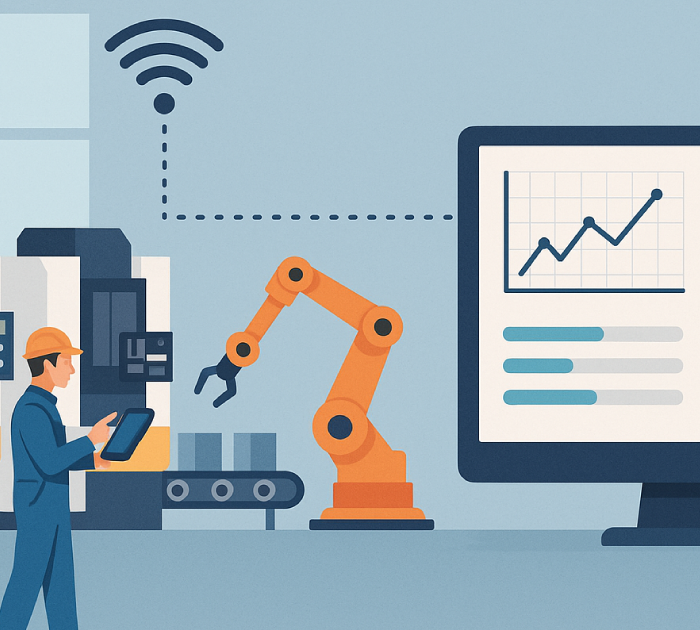The manufacturing industry is changing rapidly. Digital tools and automation are now central to operations, offering increased efficiency and productivity. However, with these advancements come new challenges. Cybersecurity risks, especially concerning Enterprise Resource Planning (ERP) systems, are on the rise. For Chief Technology Officers (CTOs), protecting these critical systems is no longer optional. It is now essential to reduce risks and ensure business continuity through security.
ERP systems are crucial because they manage vital processes like supply chains, production schedules, and inventory tracking. Yet, their importance also makes them attractive targets for cybercriminals. As a result, understanding the risks and taking the right steps to enhance security is a priority.
Why ERP Security is Critical for CTOs
ERP systems simplify complex manufacturing operations by unifying processes into one platform. However, this integration also creates vulnerabilities. Here are some key challenges every CTO should consider:
1. Integration Complexities
Modern manufacturing heavily relies on connected systems. For instance, ERP software is often linked to IoT devices, external vendor platforms, and automation tools. While these integrations improve efficiency, they also open more doors for attackers. A single weak connection can expose the entire ERP system.
2. Outdated Systems
Many manufacturers still use old ERP software. These systems often lack the modern security tools needed to defend against advanced threats. Additionally, older systems are harder to update, making them an easy target for hackers.
3. Insider Threats
Employees, whether intentionally or accidentally, can compromise security. For example, weak passwords or falling for phishing scams can give attackers access to critical systems. This makes it important to monitor and control employee access.
4. Supply Chain Weaknesses
Manufacturers depend on suppliers, vendors, and contractors. Unfortunately, a breach in one of these third-party systems can spread to the manufacturer’s ERP. As a result, the entire operation can be put at risk.
5. Regulatory Compliance
In addition to security threats, manufacturers must comply with strict regulations about data protection. Failure to do so can lead to fines, legal trouble, and a loss of customer trust.
How to Strengthen ERP Security
Although ERP systems face many risks, there are steps CTOs can take to improve security. Modern ERP solutions often include features designed to protect against threats. By adopting these best practices, manufacturing companies can significantly reduce their vulnerability.
1. Regular Updates and Patches
First, ensure ERP systems are kept up to date. Cyber threats evolve quickly, but software updates often include fixes for known vulnerabilities. A regular patching schedule can block many potential attacks.
2. Use Multi-Factor Authentication (MFA)
Passwords alone are not enough to secure ERP systems. By adding MFA, which requires users to verify their identity in multiple ways, companies can reduce unauthorized access.
3. Limit Access with Role-Based Controls
Not every employee needs full access to the ERP system. Using role-based access control ensures that individuals only see the information they need. For instance, production staff may not need access to financial data, and vice versa.
4. Encrypt Sensitive Data
Encryption ensures that sensitive data cannot be read, even if it is intercepted. This applies both to data stored in the ERP system and data sent between systems. Most modern ERP platforms have encryption features that are easy to enable.
5. Train Employees
Cybersecurity is a shared responsibility. Training employees to recognize phishing attempts, use strong passwords, and report suspicious activity can prevent many breaches. For example, a simple training session on spotting fake emails can save companies from costly attacks.
6. Monitor and Respond to Threats
Continuous monitoring is critical. Tools that detect unusual activity can alert IT teams to potential breaches before they cause major damage. In addition, having a response plan ensures the company is prepared to act quickly in case of an attack.
7. Consider Cloud-Based ERP
Cloud-based ERP solutions often have stronger security protocols than on-premises systems. Providers typically include firewalls, encryption, and disaster recovery as part of their service. However, it’s important to choose a trusted vendor and review their security measures.
Emerging Trends in ERP Cybersecurity
As technology advances, new tools are becoming available to strengthen ERP security. For instance:
- AI-Powered Threat Detection: Artificial intelligence can analyze vast amounts of data in real time, helping to detect and block threats faster.
- Zero Trust Models: This approach ensures that no user or device is trusted by default, making it harder for attackers to gain access.
- Blockchain for Supply Chains: Blockchain technology provides a secure way to track and verify transactions. This can reduce the risk of tampering or fraud within the supply chain.
Conclusion: A Secure Path Forward
For CTOs in manufacturing, ERP security is more important than ever. The risks are growing, but so are the tools and strategies available to fight back. By understanding the challenges and adopting proactive measures, manufacturing companies can protect their systems, data, and reputation.
Remember, cybersecurity is not a one-time effort. It requires continuous attention, investment, and education. With the right approach, CTOs can build a resilient organization that thrives in the digital age.






